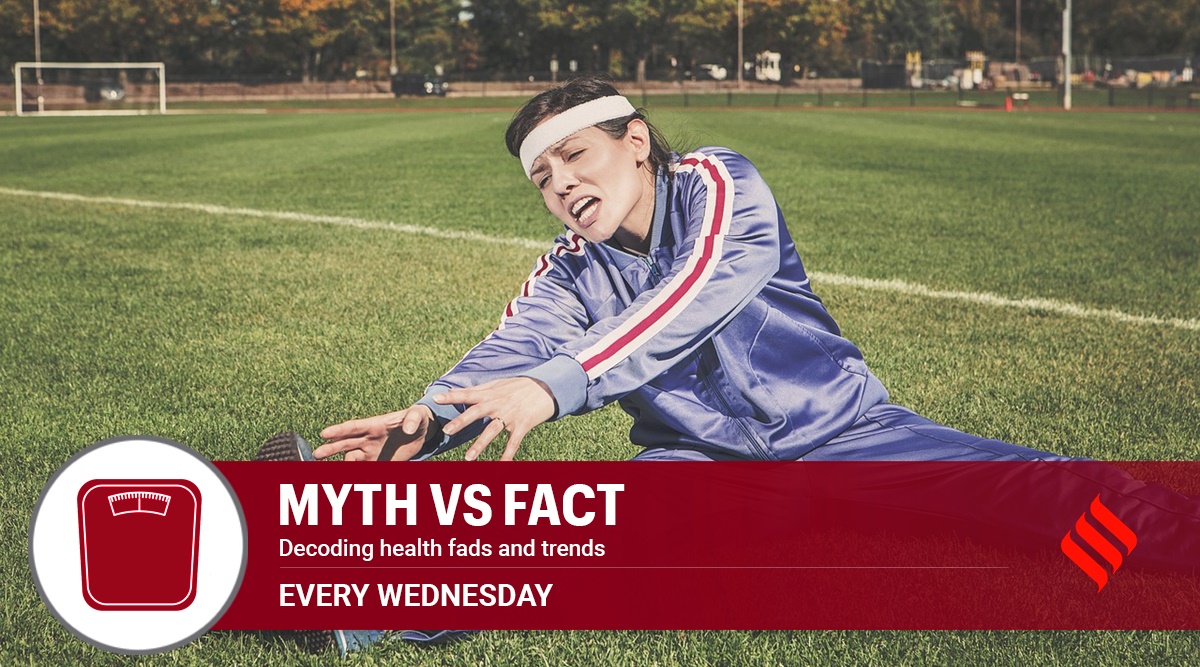Exercise and physical activity definitely reduce the risk of cardiovascular disease (CVD), with many studies showing that an active individual is at a 30 to 40 per cent lower risk. But latest research has busted the myth of limitless exercise, overdoing it and pushing too hard and advised a moderate amount instead. An intense workout regime exercise may actually encourage calcification in arteries or atherosclerosis in active, middle-aged people.
The research paper, published in the journal Circulation, focussed on investigating the relationship between exercise volume and intensity and the progression of coronary risks among older male athletes. Over the long follow-up period, exercise intensity was associated with the progression of coronary atherosclerosis. According to the findings, “A vigorous intensity exercise was associated with significantly higher atherosclerosis and calcified plaque progression. Exercise with a very high level of intensity has been associated with the formation of calcified plaque, which suggests that certain mechanisms may be involved in facilitating coronary atherosclerosis in athletes.”

Explaining this, Dr Bimal Chhajer, cardiologist, former consultant at AIIMS and founder of SAAOL Heart Institute, says, “There has been a long withstanding belief around the globe that an enormous amount of physical activity and exercising reduces the risk of CVD and other associated diseases. With ever-growing new findings and research, it has now been established that while mild physical activity can help in reducing the risk of CVD, high intensity exercises can lead to progression of coronary atherosclerosis in middle-aged and older male athletes. Certain exercises or workouts are known to put excessive burden on the heart which leads to the body producing higher catecholamine levels that increase an individual’s heart rate and blood pressure. An accelerated heart rate can speed up atherosclerosis. Catecholamines are important stress responses present inside the body and high levels of these stress responses can cause high blood pressure leading to several problems like headaches, sweating, pounding of the heart, pain in the chest and anxiety, all of which are triggers.”
“Coronary atherosclerosis is a condition where plaque starts forming inside the inner walls of the arteries present in the heart. This plaque can consist of fats, cholesterol and other substances in and on the artery walls. The arteries are responsible for carrying oxygen-rich blood throughout the body, and due to this plaque formation, the pathway for blood becomes narrow and decreases or blocks blood flow through the body. Eventually due to this blocking of arteries and improper blood flow, an individual can suffer from a variety of CAD. While exercise intensity is said to be corelated with the progression of coronary atherosclerosis, there is little to no impact on the human heart by the volume or number of workouts,” adds Dr Chhajer.
Most Read 1Chandrayaan-3 mission: Dawn breaks on Moon, all eyes on lander, rover to wake up 2As Indo-Canadian relations sour, anxiety grips Indian students, residents who wish to settle in Canada 3Karan Johar says Sanjay Leela Bhansali did not call him after Rocky Aur Rani: ‘He’s never called me but…’ 4Gadar 2 box office collection day 40: Hit by Shah Rukh Khan’s Jawan onslaught, Sunny Deol movie ends BO run with Rs 45 lakh earning 5Shubh’s tour in India cancelled: Why is the Canada-based singer facing the music?
He suggests moderation as the key to living a healthy life. “There is no need to burden the body with several hours of high intensity workouts when you can achieve the same results over a period of time with less or mild intensity exercises. Burdening the body way too much when it’s not ready for it can lead to catastrophic results, not only in the case of the heart but otherwise as well.”
Advising regular screening, he says, “The plaque burden present in the heart can be diagnosed with the help of several diagnostic tests. A biomarker for the amount of coronary atherosclerotic plaque and potential risk of CVD events is coronary artery calcification (CAC) which can be measured through advanced diagnostic tests. Every individual is required to get regular screening to prevent such events.” Plaque can be measured through computed tomography (CT) imaging technique and a Coronary CT angiography (CCTA).The present study is known as the
Also ReadRight or left arm? What is the right way of measuring BPHow a German hospital used ayurveda as supportive therapy to help Parkins…What if I cannot sleep more than 5 hours despite my best efforts? How to …Count your carbs: How much rice can a diabetic have? Is brown rice better…
MARC-2 (Measuring Athletes’ Risk of Cardiovascular Events 2), a follow-up of the MARC-1 (Measuring Athletes’ Risk of Cardiovascular Events 1) study. The MARC-2 study recruited asymptomatic middle-aged and older men above 45 years of age and did not show any abnormalities in their sport’s medical evaluation between May 2019 and February 2020. Individuals who underwent a percutaneous coronary intervention during follow-up were excluded. Relevant information about the exercise characteristics of the participants was obtained via a validated questionnaire. This questionnaire focussed on collecting information about the type of sport, frequency, duration for each sport (in years), duration of an exercise session, and level of performance, i.e., recreational vs. competitive, of the study cohort.
© IE Online Media Services Pvt Ltd


